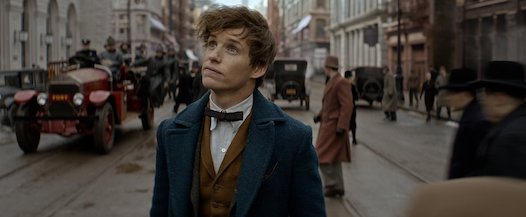|
|
The Number One Movie in America: Fantastic Beasts and Where to Find ThemBy Sean CollierMarch 20, 2020
In this way, “Fantastic Beasts” was a few steps behind, right out of the gate. That’s something of a shame, because there’s plenty to like about the film. The central quartet — Eddie Redmayne as Scamander, Dan Fogler as hapless muggle (sorry, no-maj) baker Jacob Kowalski, Katherine Waterston as beleaguered auror Tina Goldstein and Alison Sudol as her charming, semi-psychic sister, Queenie — are an excellent, compelling group. All of the action around Newt’s missing beasts is enjoyable, and many of the creatures (more Nifflers, please) are irresistible. The film is muddy, however. A long, bleak and convoluted plot line — about a powerful young wizard trapped in an anti-magic society and the sinister forces looking to exploit him — is given more prominence than it should (a problem which grows exponentially larger in the second film). The film also dabbles in clunky symbolism and occasional stereotype, two flaws which have become Rowling’s albatrosses. Still: “Fantastic Beasts” is a good film, enjoyable if long and possessing measurable quantities of the Wizarding World charm. Such qualities may be absent in the second chapter; perhaps the already-delayed third will return the series to something more befitting the Potter name. At least “Fantastic Beasts” has one victory to claim over its eight more successful forebears: It is, to date, the only Wizarding World picture to win an Oscar, earning lauded designer Colleen Atwood a fourth award for Costume Design. So the film let us down a bit, but boy, those outfits were sharp, eh? “Fantastic Beasts and Where to Find Them” is the subject of the latest episode of The Number One Movie in America, a look back at past box-office champions. Each episode’s film is drawn at random from a list of every number-one movie since the late 1970s. Please listen and subscribe! Next time: Two gigantic movie studios go to war over which one gets to render uncanny, computer-animated insects.
[ View other Number One Movie in America articles ]
[ View other columns by Sean Collier ]
[ Email this column ]
|

|
|
|

|
Friday, November 1, 2024
© 2024 Box Office Prophets, a division of One Of Us, Inc.


